
Major 3rd Interval Songs
Here are some famous examples of major 3rd intervals in popular songs. There really are too many to choose from as any two notes that are a two whole-steps (tones) apart are classified as a Major 3rd interval.
‘Symphony No. 5’ – Beethoven
Here the first two notes (G – Eb) are a descending Major 3rd. The third and fourth notes are a Minor 3rd (F – D). The major 3rd at the beginning is more unusual as the piece is in C minor. This is without doubt one of the most dramatic and famous examples of a Major 3rd in Western music.

‘Morning has Broken’ – Cat Stevens
As you can see from the image below, the C natural to E natural in ‘Morn-ing’ is a Major 3rd.

Taylor Swift ‘ Today was a Fairytale’
The opening line ‘Today was a fairytale’ contains a Major 3rd of C natural to E natural. This is on the the word ‘To-day’.

‘Summer Nights’ – Grease
‘Summer Night’ has a descending Major 3rd from F# to D natural. The interval appears in the first two notes with the lyric ‘Sum-mer’.

What is a Major 3rd Interval?
Firstly, the definition of an interval is the distance between two notes. We could play the notes at the same time, a harmonic interval, or one of the other, a melodic interval. So how can we describe the distance between two notes.

Using whole steps and half-steps (tones and semitones)
We could describe an interval in terms of the number of half-steps for the lower note to the upper note. For a major 3rd we have to go up four half-steps or two whole-steps to create the interval.
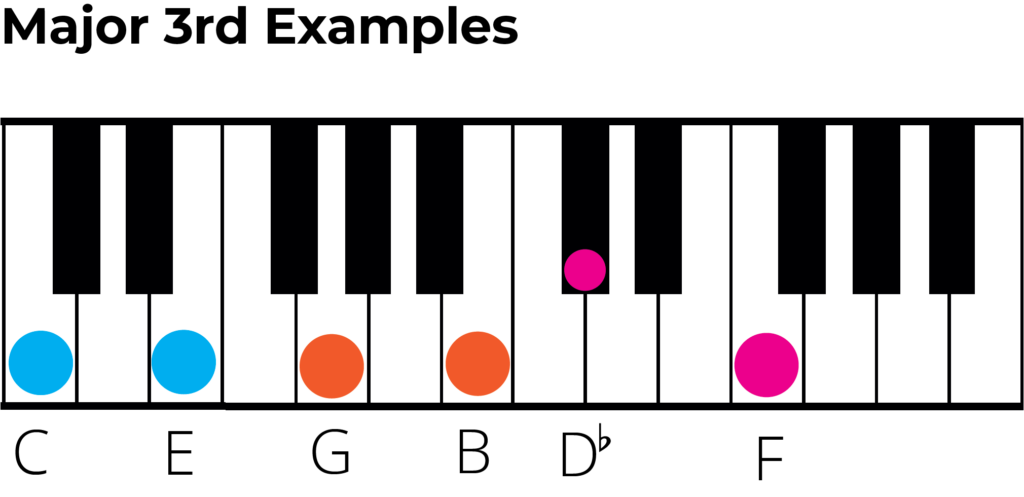
Using scales to name intervals
Simply put, scales are patterns of half-steps and whole-steps. In the major scale, the 3rd degree will be two whole-tones above the root note. This interval is therefore call a Major 3rd. (In the minor scale, the 3rd is flattened and we get a Minor 3rd).
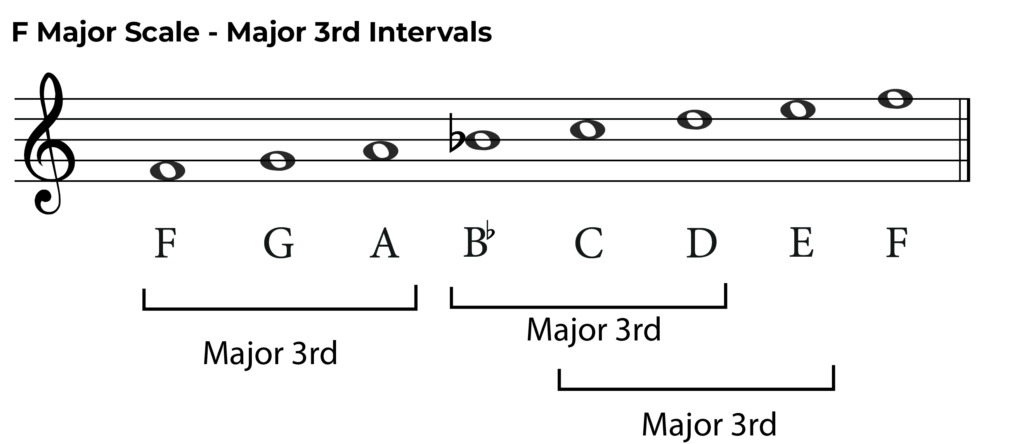
Ear Training and Intervals
To develop as a musician you’ll want to be able to recognise intervals by ear. This is where ear training comes in, as the more you practice, the better your’ll get.
My recommendation for this is Tonegym as they have a comprehensive and fun program for training your ears. It’s what has gotten the best results with for my own students.
In the ‘tools’ section of their site, Tonegym even have an interval memorizer that allows you to learn every type of interval.
For an in-depth look at ear training, here’s my full review of Tonegym.
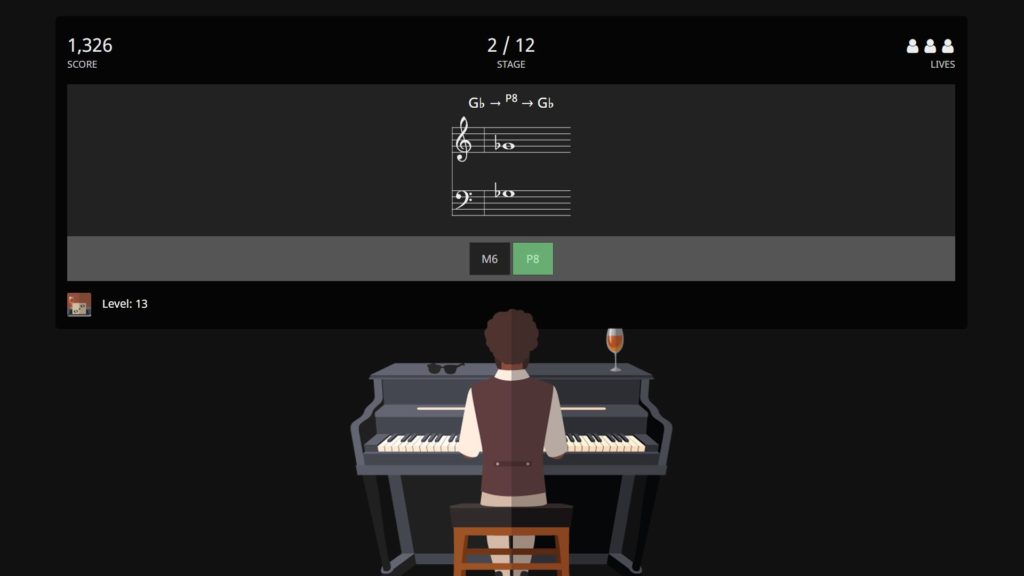
Examples of Major 3rd Intervals
Here is a table which shows Major 3rds across a whole octave. Remember that to name an interval ask yourself, ‘Which degree of the lower note’s scale is the higher note?’
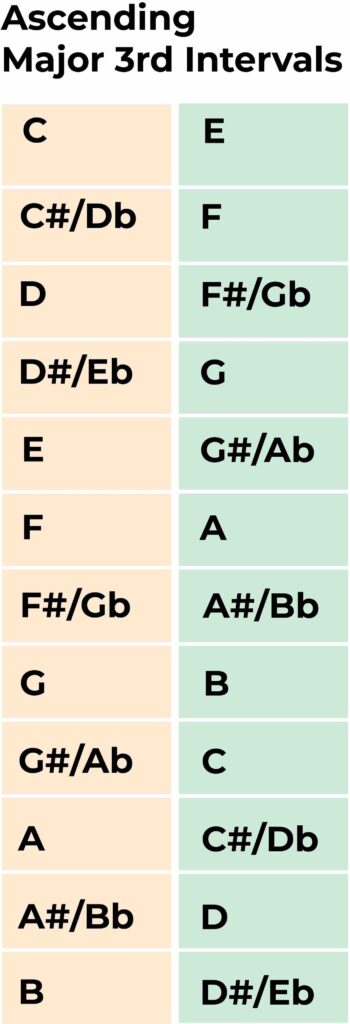
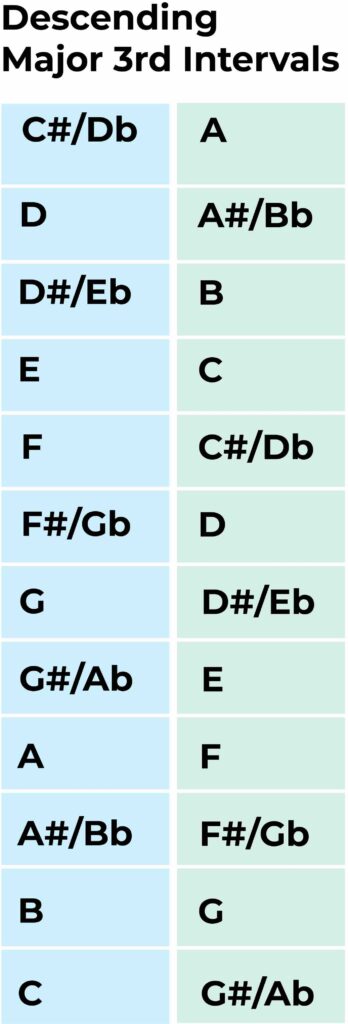
Major 3rd Interval Qualities
We can describe the sound of intervals using a numbers of adjectives. An interval can sound ‘stable’ or ‘grounded’ like a perfect 5th, or it could sound ‘dissident’, ‘neutral’ or even ‘sinister’.
A major 3rd interval, with its harmonious and consonant qualities, brings a sense of stability and resolution to music. It creates a pleasant and uplifting atmosphere, with feelings of contentment and tranquility. It adds a touch of warmth and optimism to compositions, creating a harmonically pleasing foundation that listeners find comforting and satisfying.
How to Identify Major 3rd Intervals by Ear
The best way to start identifying Major 3rd intervals is by listening to reference songs like the ones above. This will give you a reference point to look back at when listening to new pieces.
Another great reference song is the first two notes of ‘When the Saints Go Marching In’. This piece starts on a C followed by an E to give us the Major 3rd interval.
The solfege system can also help as ‘do-mi’ is a major 3rd interval (C to E).
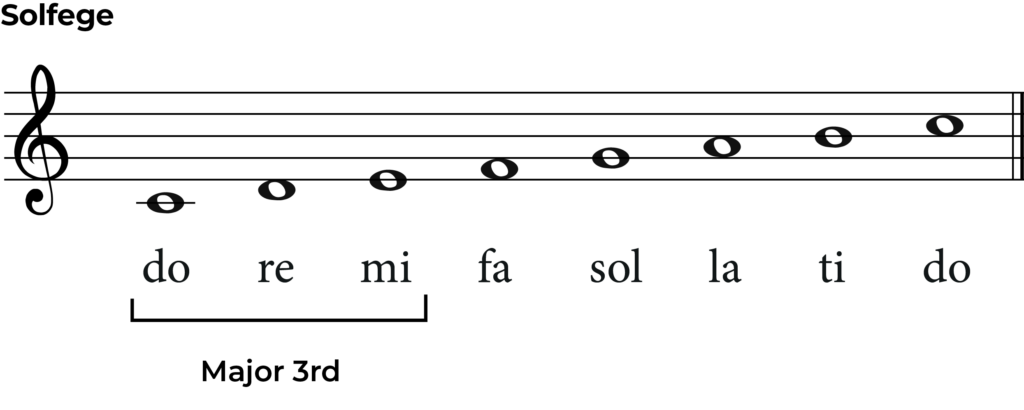
ToneGym- The Ultimate Ear Training App
ToneGym allows you to improve your ear with a range of games, interactive and competitions.
Or check out our complete review of ToneGym.

How to Play Major 3rd Intervals on Your Instrument
If you are a pianist then playing a Major 3rd couldn’t be easier. Moving up four keys (or four half-steps) will give you a Major 3rd. Check out the examples below.

Major 3rd intervals on guitar are also simply to play. Fret any note and then play the note 4 frets up. This will be a Major 3rd interval. See the examples below.
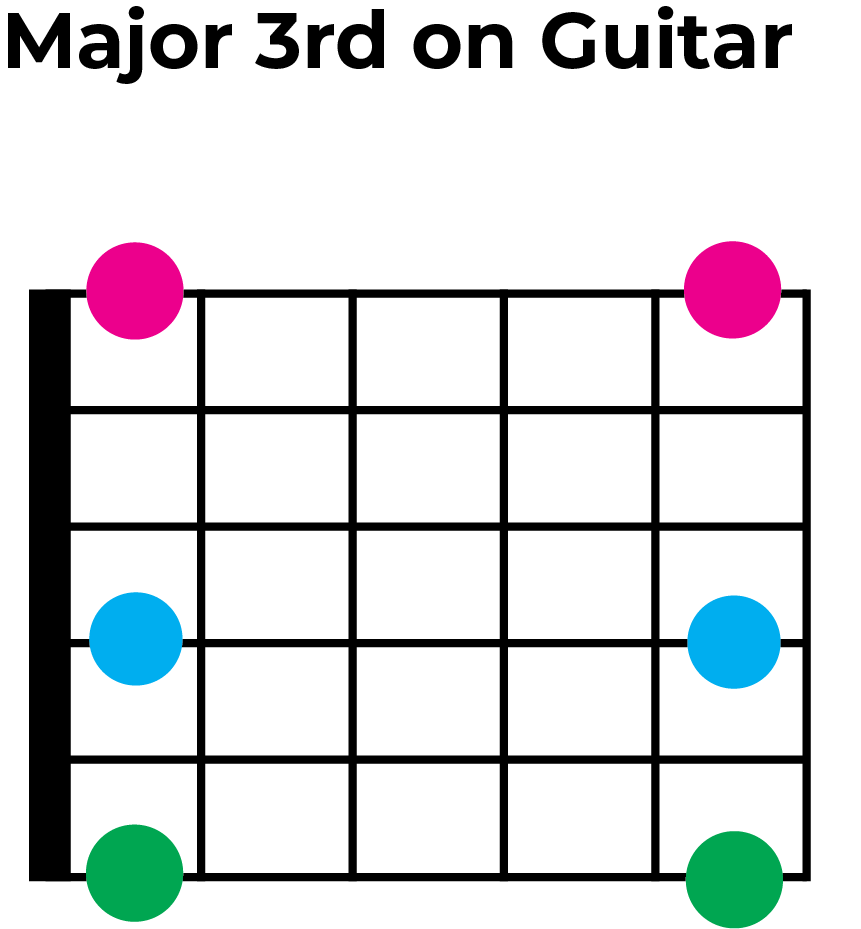
What’s next….?
- Learn about the Minor 3rd intervals.
- Expand your interval knowledge with out complete guide to intervals.
